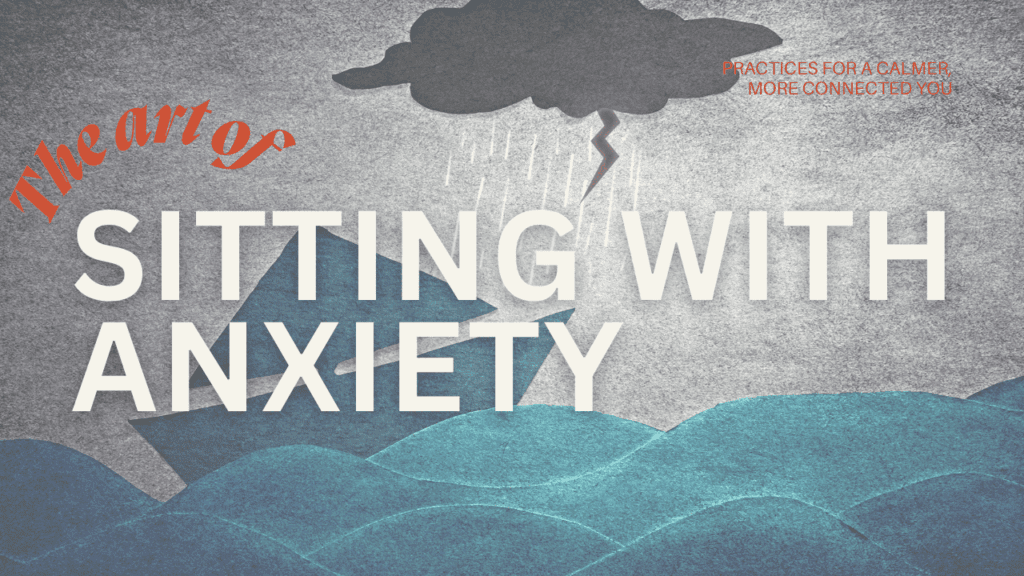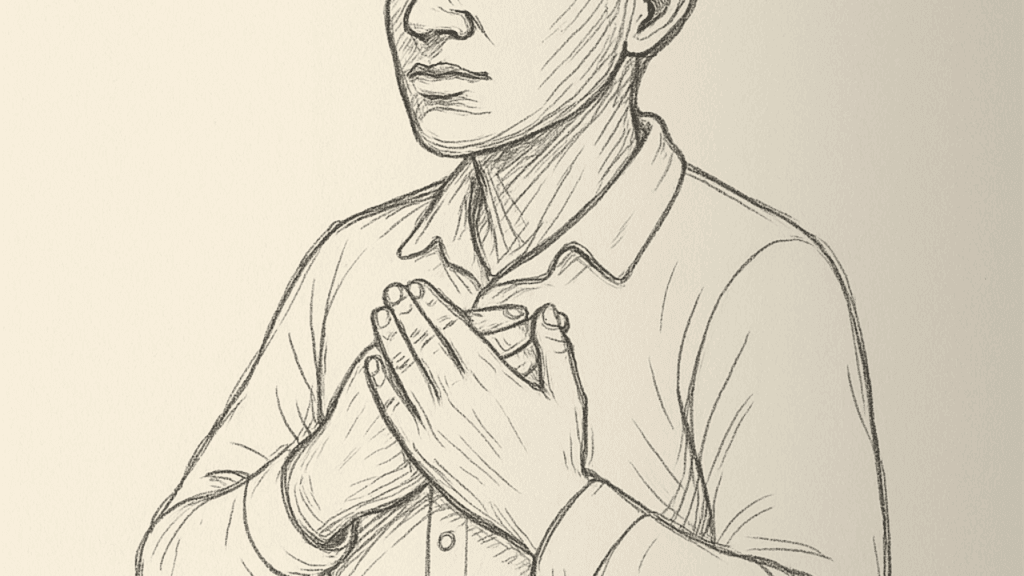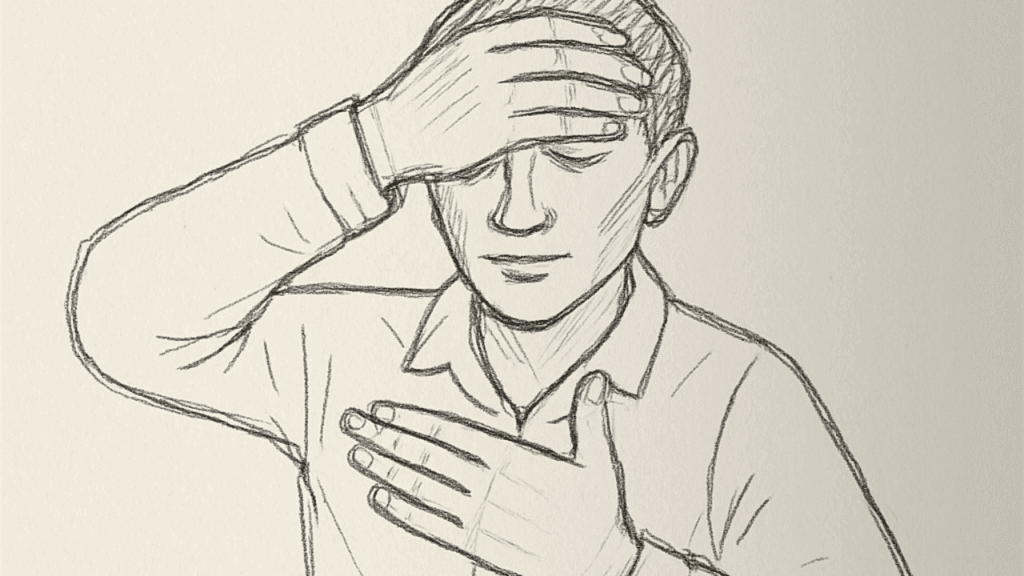Discover self-compassion, somatic tools, and mindful words to anchor you—and find support through therapy for anxiety in Long Beach.

The low hum of anxiety, ever-present, looping through what ifs and worst-case scenarios, can feel like a soundtrack we never asked for. That familiar dread, the sharp edge of fear, and the rising wave of panic in the face of life’s uncertainties. Like so many, I know this terrain well: the sinking sensation in the stomach, the restless nights. Anxiety is an old friend, for me and many.
Its roots lie in arguably our first and most primal emotion, fear. Panic, terror, and anxiety all arise from the same ancient circuitry: the threat-response system of our autonomic nervous system, crafted over millions of years to keep us alive. And yet, for all of us who’ve felt anxiety deep in our chests and bellies, so few of us know how to truly feel it—let alone heal it.
So what does it mean to feel our anxiety? And how do we begin?
One of the most profound lessons I’ve learned about emotions is this: e-motions are energy in motion. They are waves of energy moving through our bodies. To feel anxiety means choosing to stay in our bodies when every instinct screams at us to run, hide, distract, or numb ourselves. It means allowing the sensations, images, feelings, and thoughts to unfold without immediately shutting the door on them.
In somatic experiencing (SE), a trauma healing modality, there’s a practice known as SIFTing—sifting through Sensations, Images, Feelings, and Thoughts. This gentle process invites us to move beyond our coping strategies and into the heart of our experience, listening for what our anxiety is actually signaling: often, a need or longing hidden beneath the surface.
For me, anxious spirals of rumination or compulsive reassurance-seeking often mask a desperate need for control. And when control slips from my grasp, my anxiety can transform into grief, sadness, or helplessness. Emotions that need soothing, not fixing.
What comes next, then? How do we begin to heal anxiety?
Another lesson I’ve come to hold close in this work is that healing doesn’t mean we stop hurting. Healing is about becoming whole, about integrating, not about picking and choosing which feelings we allow and which we exile. It’s not about fixing, solving, or explaining away our pain. It’s about learning to tolerate and even befriend the full spectrum of our inner world—the pleasant and the painful alike.
Here are some practices to help us to do just that.

Self-compassion practices: One of my favorite ways to SIFT through and sit with anxiety is through Tara Brach’s RAIN, which offers a gentle, mindful approach to meeting anxiety and other difficult emotions with curiosity and care:
- Recognize what’s here: Gently notice what’s arising within you. The thoughts, feelings, and sensations swirling in this moment. You might do this with a soft mental whisper, simply naming what you’re most aware of: fear, sadness, tightness, anger—whatever is true for you right now.
- Allow the experience to be: Let what you’ve recognized exist just as it is, without trying to change, fix, or push it away. This might sound like quietly saying to yourself: It’s okay… this belongs… yes. Allow your experience to be part of your moment, like waves moving through you.
- Investigate with curiosity and care: Bring a tender, open curiosity to what you’re feeling. Ask yourself: What most needs my attention right now? How is this showing up in my body? What am I believing about myself or this situation? What does this vulnerable place long for from me? Let your questions be an invitation to deepen understanding, not a demand for answers.
- Nurture with compassion: Sense what this hurting, frightened, or tender place inside you most needs and offer it care. It could be a message of reassurance: I’m here with you. I love you. It’s not your fault. I see you. Or the comforting touch of a hand over your heart. If offering yourself love feels hard, imagine someone who loves you deeply—a friend, family member, spiritual figure, or even a beloved pet—sitting with you, their love holding you and their wisdom reaching into your heart like warm light.
You can also add some somatic and anchoring practices after or with your RAIN exercise to help ground what you’re feeling in your body.
Somatic Practices:
- Feel your feet on the ground. Release your shoulders.
- Lengthen your exhale. Release your belly and lift your spine.
- Place a hand on your heart and the other on your forehead. Feel your body’s support.
- Orient your gaze to something right here, right now.
- Gently sway or rock your body for self-soothing.

Because anxiety lives in our bodies, the most powerful path to healing also runs through the body. Simple practices like grounding our feet, softening our breath, or adjusting our posture can help us hold our emotions with care, inviting a sense of grounding back into our nervous system.
And yes, the anxious mind will resist. It will conjure a storm of what ifs, each one a plea for control or a cry of terror at the thought of losing it. But what we often need in those moments isn’t more control. It’s comfort—gentle reassurance through our breath, our connection to the earth beneath us, or with the steady presence of someone we trust.
Words as anchoring reminders: When anxiety threatens to sweep you out to sea, what words can help you return to shore? Lately, I’ve been leaning into this quote from Peter Levine’s An Autobiography of Trauma:
“I give thanks for help unknown, already on its way.”
Native American Quote
I’ve also come to cherish the quiet power of the words: Meanwhile and Yet.
Things aren’t certain; meanwhile—I am alright.
I may not have been alright yesterday, and I might not be alright tomorrow… yet—right here, right now, I am alright.
As described by Dr. Rick Hanson, meanwhile holds the paradox of impermanence and the possibility of renewal in every moment, all contained in a single breath.
Yet gives voice to something we feel deep in our bones. Something just as powerful as anxiety: hope.
Whenever you begin to feel anxious, a verbal anchoring practice, simple somatic exercises and self-compassion can have a beneficial effect. Try them out and see what emerges.
If you’re searching for therapy for anxiety in Long Beach, I invite you to visit my service page to learn more about how we can explore how to heal anxiety together.